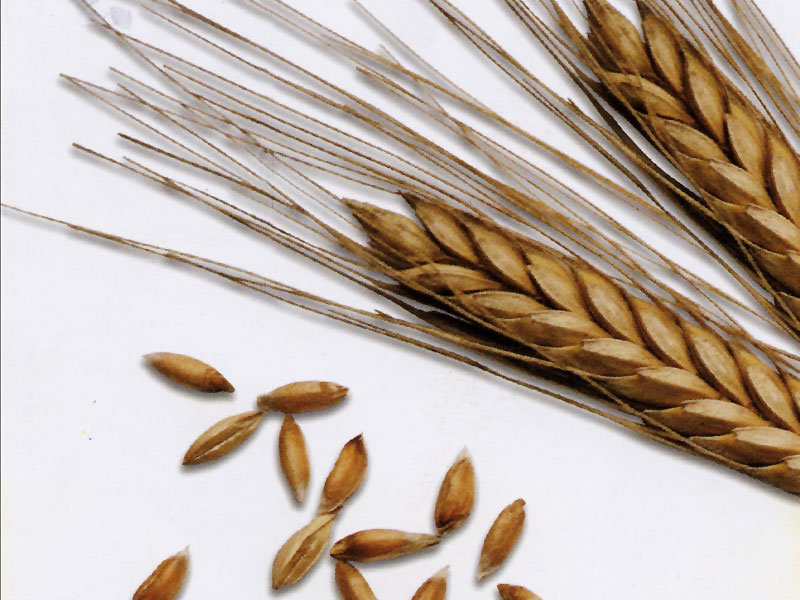Spelt
What it is
Spelt is the wheat of Umbria which contributed to the greatness of ancient Rome. It was transported here from the ports of Paliano (Orvieto) and Otricoli along the river Tiber. Already known in the Middle East in the 8th-9th century BC, this poor cereal has been characterizing for centuries the cuisine of Umbria. Its compact and hook-shaped spikes and its particular hard grains make it fit for cultivation in the hilly and mountain areas, as well as easy to preserve and transport. Today it has been rediscovered by many small and medium-size agricultural holdings of the area of Orvieto practicing organic farming.
Cultivation Methods and Uses
Spelt lost its popularity during the Middle Ages because its cultivation and threshing had some drawbacks. As a matter of fact, spelt is covered by a hard protective hull: threshing is not enough to eliminate it, and another process, called decortication, is required. It is sown later than wheat, until January, using about 200 kilo seeds per ha. From a nutritional point of view, it is very similar to wheat, and for its precious and balanced content in mineral salts, it can replace it in case of intolerance. It also has interesting properties to purify the organism or restore the functions of the intestine. It is used to prepare delicious soups, in polenta, or puffed like pop corn. In the area of Orvieto it is often associated with other legumes like lentils, chick peas, or beans, but it is also very good boiled to replace pasta, flavored with slightly spicy tomato sauces.







